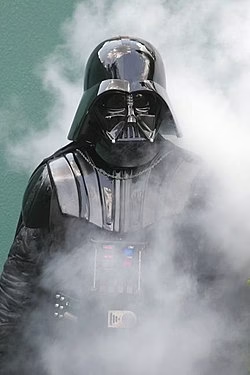It’s the first Wednesday of the month and time for another posting of the Insecure Writer’s Support Group.
The awesome co-hosts for the August 6 posting of the IWSG are Ronel Janse van Vuuren, Natalie Aguirre, Sarah – The Faux Fountain Pen, and Olga Godim!

I had something different planned for today, but that update can wait for next month…
August 6 question: What is the most unethical practice in the publishing industry?
At first, I made an off-hand comment that using generative AI to write your book (asking people money for something a computer program spat out based on data learned from unpaid sources) was the biggest issue.
IMO, using generative AI to write your book (no matter that it’s your idea, the tech you’re using was built on the unpaid backs of others) is probably the most unethical practice in the publishing industry in 2025. I have no issue with programs like ProWritingAid which assists you to find typos and overuse of certain words as it makes the work easier on human editors to focus on the real problems in the text. I’m still on the fence on AI images… I think it’s okay to use if you’re not asking to be paid for it (like the cover on a special edition book that’s specifically about the cover art). The use of AI images in blog posts like you would use free stock images from Pexels, Pixabay and others is fine.
And as part of an update post with other things, too, it was fine. Then I asked YouTube… Wow. I found a rabbit hole full of unethical practices in the publishing industry, by editors and authors alike, and it was not just entertaining (like watching a cat fight in high school) but also concerning. (Kickstarter drama, book signing convention disasters, etc.) It makes it harder for honest authors to earn trust.
But it seems AI is still the divisive thing among authors and readers alike.
I know some authors use AI to enhance their workflow.
Sure, her writing style has changed, but maybe it would’ve happened with time anyway. There are a lot of AI-centred podcast episodes on her channel if you’re interested to learn more about this topic.
There are other AI issues. Like plagiarism. This is the worst-case scenario I found: an entire plagiarised book.
Clearly, it’s a matter of doing the work yourself with the aid of a computerised spell-check and research buddy – or having C3PO doing your homework for you.
So, images…
Remember CGI?
Computer-generated imagery (CGI) is a specific-technology or application of computer graphics for creating or improving images in art, printed media, simulators, videos and video games. These images are either static (i.e. still images) or dynamic (i.e. moving images). CGI both refers to 2D computer graphics and (more frequently) 3D computer graphics with the purpose of designing characters, virtual worlds, or scenes and special effects (in films, television programs, commercials, etc.). The application of CGI for creating/improving animations is called computer animation (or CGI animation).
Learn more here.
There was a clear use of CGI in the third Terminator movie which was rather ridiculous as the truck tore up the road, but it got so good, that a lot of movies are now filmed with blue/green screen and filled in with CGI and you are none the wiser. Except when the work is done in a sloppy manner… (You can google all of this and go down a rabbit hole yourself.)
And now the definition for AI Images:
Artificial intelligence visual art means visual artwork generated (or enhanced) through the use of artificial intelligence (AI) programs. Artists began to create AI art in the mid to late 20th century, when the discipline was founded. Throughout its history, AI has raised many philosophical concerns related to the human mind, artificial beings, and also what can be considered art in human–AI collaboration. Since the 20th century, people have used AI to create art, some of which has been exhibited in museums and won awards.[1]
During the AI boom of the 2020s, text-to-image models such as Midjourney, DALL-E, Stable Diffusion, and FLUX.1 became widely available to the public, allowing users to quickly generate imagery with little effort.[2][3] Commentary about AI art in the 2020s has often focused on issues related to copyright, deception, defamation, and its impact on more traditional artists, including technological unemployment.
Learn more here.
What’s the difference between CG and AI images?
The biggest difference between AI and CGI lies in the way the technologies work and how they are used. While artificial intelligence is based on machine learning and automated processes, CGI is created in a manual process.
…you can ask the AI model to create a specific image for you, which Midjourney then creates based on photos and images from the web.
It’s important to remember that artificial intelligence isn’t actually intelligent. AI models can create content on their own, but it’s always based on other content and information.
In contrast to AI, CGI is not based on machine learning, but on computer technologies that are used manually to achieve results. This includes 3D software such as Unreal Engine, which can be used to create images and videos of objects, people, or scenes.
Creating visual content with CGI requires a lot of expertise and the right hardware and software. With the help of 3D software, you can create realistic 3D models that look just like real photos.
While AI generates results for you, with CGI you have to shape the result yourself. With the help of certain tools, you can manually edit details like shadows and textures.
Learn more here.

Personally, I use images from Pixabay to enhance my blog posts (with a link back to where I got it). Unless the image is ridiculous (an arm coming from a place it shouldn’t), it doesn’t bother me if it’s AI. (The image above is from RichardsDrawings on Pixabay and I assume it’s thus drawn by a guy named Richard.)
But – now for that can of worms – what about using AI images on your book covers?
A part of the cover, e.g. a monster you wouldn’t otherwise get, either through AI or CG? Can you really spot the difference if it’s done well? And other forms of image manipulation (Canva, Photoshop, etc.)? Where should the line be drawn?
An example of covers by JF Penn:


I’m using her covers as examples because she’s been open about being an AI artisan author and using AI in her process the last two years.
Can you spot the difference? And does it matter? (The first was created using image manipulation and the second has an AI combat photographer and other image manipulation techniques used when creating book covers.)
What’s the difference between using an image from a royalty-free stock image site and one from a generative AI image program like DALL-E among others to create your book cover? Paid, free – these images are used as advertisement for the content within. If you want stock photos, here’s an article to help you find the right site. And even on those sites, you have to be careful that you’re not choosing an AI created image.
I use Canva, ProWritingAid and probably a bunch of AI driven programming in my daily life without noticing the difference – except that whatever model smartphone I have now is vastly different from my first Nokia 3210…

I grew up with computers and advancements in technology. Should I be like Sarah Connor or Iron Man? Or perhaps Darth Vader?
Embrace change and temper it with ethics, that’s all I think we can do.

What do you think? Please share your thoughts about the use of AI in publishing (respectfully!) in the comments. Anything else that you spotted that is happening in publishing that affects us all? You can learn loads more on my For Authors page here. You can listen to the crazy stuff happening in publishing here and here.

No-one writes about the fae like Ronel Janse van Vuuren.





The first image is softer but that is that is the only difference between the covers.
Yes, CGI and the like still require a person to do the work.
I think AI will be a popular answer today.
Thanks for co-hosting!
You’re welcome. The first image is probably softer as the story takes place underwater 🙂
Hi Ronel
Thanks for co hosting the IWSG this month.
After all the detailed discussions on AI in your blogpost I loved how your saying summed it up so succinctly – Embrace change and temper it with ethics.
You’re welcome. I’m glad you enjoyed my post 🙂
Thanks for co-hosting with me this month. I need to start listening to Joanna Penn. Thanks for reminding me.
Yes, we must embrace some change, but should only embrace what’s ethical.
You’re welcome. I’m glad you agree 🙂
You know what my favorite AI use is? Quick research. Since all the search engines started cultivating their responses, it’s tricking to FIND real information online anymore. AI will grab it quickly and is usually honest. LOL. I LOVE it for image creation to help storyboard, but I agree there’s some shady practices there. My husband swears that in the coming decade there will be a revolution toward “human made” art VS AI. Here’s hoping!
Your husband might be right. Since adding “written by a human” on my covers, sales have gone up! I like your use of AI 🙂
Very well written article with excellent links for more info.
I agree, “Embrace change and temper it with ethics…”
Thanks for co-hosting with me this month.
You’re welcome. I’m glad you enjoyed my post 🙂
When it comes to AI, I have always felt that assistance is fine, but theft is never okay.
Thanks for co-hosting!
You’re welcome. Yay for assistance 🙂
AI is weird. Can I just say that? I think I’m still trying comprehend it and just what it’s doing, or rather what people are doing with it. I’m finding out every other week it’s been used in some new way that’s not good, and potential out right bad.
And yet we’ve been using it since the first spell check in Word. LOL.
I like your closing thought. Trying to be ethical is the bottom line for me. I haven’t embraced AI because the ways it’s being thrown at me reek of shortcut seeking exploitation. @samanthabwriter from
Balancing Act
Thank you. I don’t like shortcuts either 🙂
To me, using AI to assist in writing “creatively” feels like cheating, like copying off someone else’s paper during a high school exam. Thank you for co-hosting IWSG this month.
Totally!
Thorough article. AI seems to be on all of our minds this month.
Thank you 🙂
Temper it with ethics indeed! I don’t want to feel guilty for using AI like I’m trying to pull something over on a reader by taking credit for words I would have never used in a piece. So, if or when you do use a bit from AI and your conscience is nagging you NOT to put your name on it, that could be a message to your heart. I do use AI for ideas for a topic and research. But not at all for creative writing. Voice is too important to readers to juggle AI and the real you. I appreciate your thorough report on this subject. I’ll return to digest it more thoroughly. Thanks for co-hosting!!
Absolutely. I’m glad you enjoyed the post.
I’m envious of the younger generation. This subject seems to come natural to anyone younger than, say 30ish. I’m close to 80 and grew up living by your wits and integrity. AI feels like a foreign neighbor that aims to get what it wants by hook or crook. The aim is for success regardless if the product has a soul. One more stop to humanity becoming machines. Thanks for co-hosting.
To stop technology from interfering too much in my creative process, I write longhand and then type it up. The story feels more alive to me like that — has a soul, as you said.
Thanks for all the detail – will share with my husband – – ( job description, teaching computers. )
How would people be responding to this question if the word ‘ artificial’ had never been used. ?
Other products – food, clothes, even agriculture, promotions stress ‘ No Artificial Ingredients.’
Exactly. This sort of computer assistance has been around for decades, but now that it is more readily available and has a new name, it is suddenly evil. LOL. I’m glad you enjoyed my post.
Is it real or is it Memorex? (I’m dating myself with this one!). Since I’ve been in the biz since the ’80s, I’ve seen tons of changes in cover graphics from stock photos that all seemed to appear on covers in the same month (it happened to one of my titles – ouch!) to the high-tech programs used today which are beyond my comprehension (good thing I have a VA who does mine!). If someone can really work the program in a unique way, AI is great but stock covers are stock cover no matter how they’re produced. Not a fan.
I had to google Memorex. LOL. I’ve seen a lot of covers using the same stock photos in a genre around the same time, some changed enough with imaging programs to look different, but it still felt like these books (by different authors) might have the same main character… probably why AI images have become so popular.
I have one other problem with AI: energy use. The demands it makes are huge, and that includes vast amounts of electricity AND water to cool the data centers. Images are higher energy-use than text, but I try to avoid AI as much as possible, and totally avoid generative AI, for environmental reasons as well as ethical ones. Paying a real person to create my covers makes it harder for my books to earn out, but I’m willing to do that to support creatives.
Your comment is excellent, Rebecca! I especially am concerned about water. We’re mining groundwater resources all over the globe, and the planet is basically desiccating.
I haven’t even considered the environmental impact — thanks for pointing that out. Paying a real person to create your covers also makes them unique and stand out better in the market place 🙂
What an excellent and informative post, Ronel! Thank you! And thank you for co-hosting today! btw, Rebecca raises a huge issue regarding AI.
I’m glad you enjoyed it. Yeah, technological advances seem to always ignore the planet’s health.
Thanks for sharing this thoughtful response to this month’s burning question! I think you’re right about AI being high on the list of dubious tactics (disguised as standard best practices). My lament is the lack of, or complete loss of, integrity as it pertains to the publishing industry. To my mind, AI without heart or soul is simply a conduit for undistinguished intentions. Thank you for co-hosting!
You’re welcome. I’m glad you enjoyed the post.
AI, whether for text or images, does the same thing: it learns from what’s out there and creates from that, according to how it is prompted. (LLMs predict what’s next, a few letters at a time. They don’t grab whole passages of text.) I have mixed feelings about AI, but it’s all trained on copyrighted works.
Thanks for co-hosting.
You’re welcome.
I’ve never used AI but I would never want it to write my book for me. It’s definitely a tricky thing to navigate for writers.
I wonder if you can still call yourself a writer if you use AI to do all the heavy lifting in the creative process?
Hi! Thanks for hosting today. There are so many unethical practices out there, but stealing others’ ideas and using them to create and sell your own book ranks at the top for me. Thanks for your post today.
You’re welcome.
I agree with AI-written books as the biggest ethical challenge these days. I’m less bothered by AI images, but maybe that comes from an uneducated place.
The AI writing is probably more an issue for us as writers 🙂
Thanks for co-hosting.
You put a lot of time and effort into this post.
Ai is a double edged sword, isn’t it. I love it for research. Hate that it ‘borrows’ authors works.
You’re welcome. Yeah, we can’t seem to escape it.
Thanks for co-hosting today!
I’m fine with programs/software that assists in finding typos and fixing grammar issues. But completely plagiarized works? That’s a definite unethical practice.
You’re welcome. Yeah, being assisted by a digital typo finder is awesome, but telling me what to write, not so much.
I think for many self-published writers, AI-created book cover is a gift. It is either free or much cheaper than a professional artist (and often better). It is also possible and easy to do yourself. When I make covers for others, I often use AI-generated images, although I manipulate them. I don’t use them the way they come out of the program. I use them as parts of my cover collages.
Totally. It’s a good way to create covers on a budget. I just think that when special print editions — like in Kickstarter — where people essentially pay for the art, there should be a human involved in the creative process of actually making those images. Thanks for stopping by.
Certainly hard to avoid AI images. They’re everywhere now! But at least trying to give credit is worthwhile.
AI is quickly getting out of control. But we had plenty of scifi movies, shows, and books to warn us that would happen.
Absolutely. But did we destroy Skynet? No, we had a welcoming party. LOL.
Hi,
Thank you for all the effort you put into this blog article. I have learned a lot and will come back to re-read it.
Thank you also for co-hosting.
Shalom shalom
You’re welcome. I’m glad you enjoyed the post.
I’m in the ethical and environmental camp. And yes, I make my own covers, using a graphics programmes and a mixture of free images and my own. Except the Princelings covers are all done ny my great-niece, beautifully – and although she doesn’t do book covers any more, she just about makes a living from her commissioned artworks these days.
Nobody creates better fantasy creatures than Dani @KanizoArt does… although there are a lot of people who do them well. But is this little niche of artistry to be wiped out by AI?
We’ve been having a debate about digital art at my art group. This year they’ve allowed digital art in the exhibition, which means mine (done on my iPad), is going in there. Yes, it is easier for me to get the placement of a guinea pigs eye better with a digital version, but it’s still me weilding the pen. (and the eraser).
But AI art? Fun, yes, when it’s a photo of my house made to look like Monet painted it, but serious art, no.
I like the way you do your covers 🙂
What an impressive reflection on the impact/ethics of AI. I love that final quote and reminder that no matter what we might do as writers, act with creativity and a sense of ethics. Thank you!
You’re welcome. I’m glad you enjoyed my post.
Great post. I like how you break down the difference between CGI and AI. I tried to explain it to someone the other day, but clearly I did not do as well as you have here. I love that we have technology to enhance our abilities, but I agree that charging someone else to pay for something you didn’t create is wrong. Using AI isn’t bad, but how it’s used can be.
Totally. I’m glad you enjoyed the post.
I’m still considering where to draw the line with AI. The clear, bright line for me is around my core creative work. I will never, ever use AI to generate my writing. Never. If I put my name on it, I wrote it. Period. I think it’s OK to use AI for things like mood boards or images in blog posts, when the core thing you are creating and promoting is not the mood board or image. Marketing copy is a little fuzzier, because that’s something a human might get paid to do if it weren’t for AI, but I’m also not a professional marketer, nor do I have the budget to hire one.
Totally.